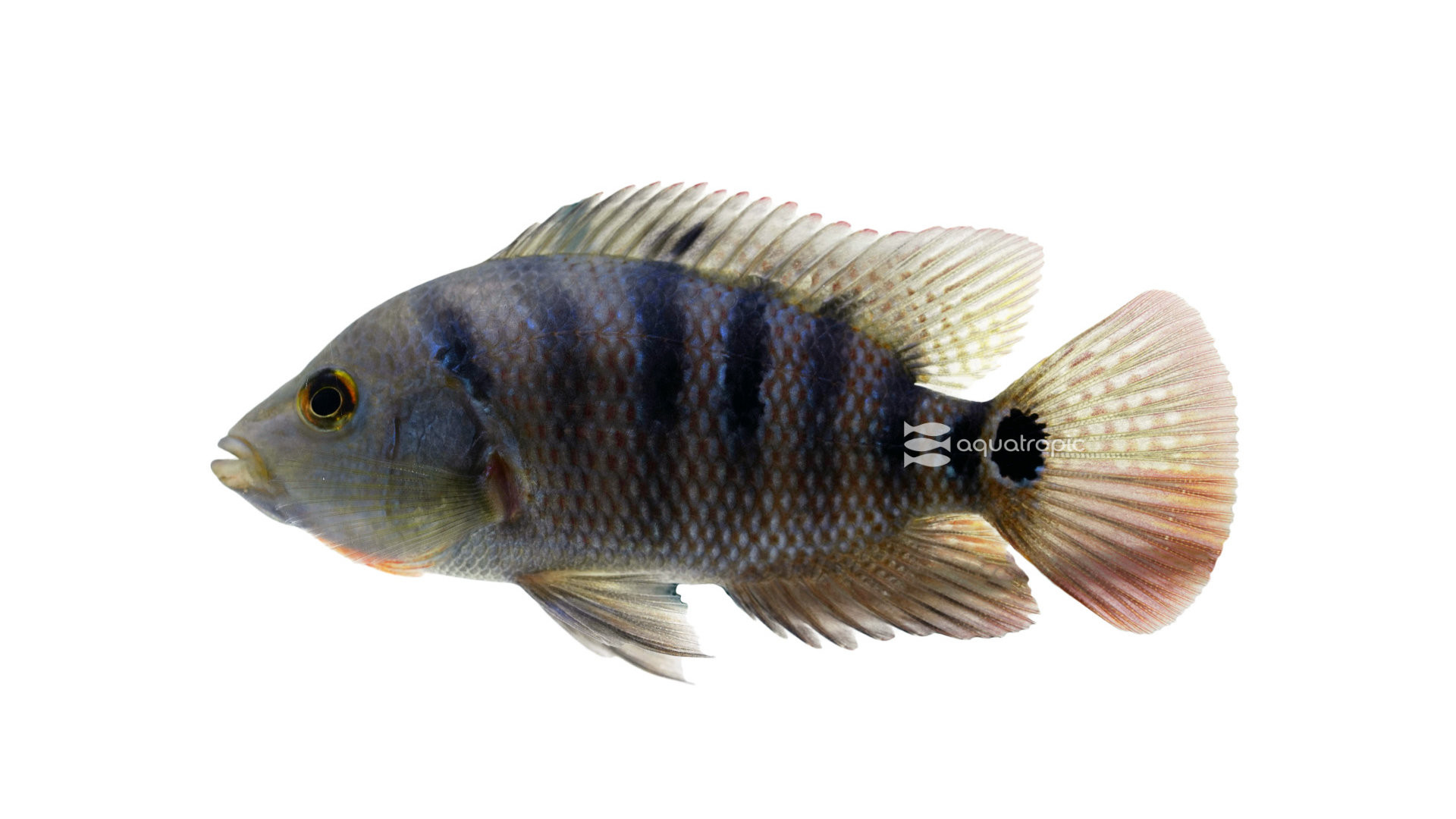The Miracle Mayan (Cichlids)

Mayaheros uropthalmus is a pretty amazing Central American Cichlid. They are most often called simply Mayan Cichlids, but have a few other common names like: False Red Terror, Mexican Mojarra and Orange Tiger Cichlid. They are similar to the Red Terror cichlid, which are larger with a bulging forehead and 9 dark bands on their sides to the Mayans five or six. When males are in spawning colors they can get a gorgeous red-orange color with black stripes, and so the Orange Tiger moniker is easy to visualize as well.
Mayaheros uropthalmus is a popular food fish in its native range, and there are many aquaculture facilities raising them for eating outside the culture facilities breeding them for aquarium use. They grow quickly, and are allegedly delicious with flaky white flesh. They are a popular sport fish with those that target them, as they are strong and willing to take artificial baits and flies. They are so aggressive that some fishermen consider them a pest as they hit lures designed for much larger fish.
The native range of Mayaheros uropthalmus includes freshwater lakes, streams rivers, marshes and mangrove swamps of tropical Mexican Atlantic drainages. They can tolerate a huge range of salinity and are often found in brackish water as adults. They can survive large and abrupt swings in salinity. Mayan Cichlids have also been introduced to south east Florida where they are thriving (and invasive). In their native range they live only in tropical temperatures, but their introduction to Florida (either by fish farm escapees, aquarium releases or intentional stocking as sport/food fish), has proven them to be very adaptable to subtropical environments as well, thriving in waters down to the low 60s Fahrenheit; studies have found that they live longer in these temperatures, but grow much more slowly. We recommend keeping them in normal tropical temperatures in the mid 70s. They prefer neutral pH, between 7 and 7.5 or so, but this isn't overly critical and neither is the general hardness. Keep nutrient levels under 20 ppm nitrate (preferably under 5ppm).
Mayan Cichlids are aggressive fish, that are best kept singly or as pairs, they will be intolerant of others of their kind outside of a pairing. They aren't territorial outside of nesting / breeding season, but will be very defensive of nest space and babies. As such, other tankmates should be limited to fish that can stand up to this like Plecos, Armored Cats and other central American Cichlids of similar size and temperament. The Mayans are hungry fish, and smaller fish and easy-to-eat inverts will be on the menu.
Displays for this fish will need to be large as they can get up to 15 inches long, though a more common adult size is about a foot. We suggest having a 180 gallons for them at grow out, or perhaps a tropical / subtropical pond in your future. Mayaheros uropthalmus likes to make nests, and rearrange its environment, and as such, plants are going to be uprooted. While you may be able to get away with plants like Anubias that can be glued or tied to rocks and wood, we suggest utilizing faux plants that are well affixed to something in the aquarium. Similarly, and rocks and or driftwood should be very solidly attached to each other and / or the bottom of the tank. Substrate should be sand or very small pebbles.
In the wild, the Mayaheros uropthalmus is an omnivore, and they are very accustomed to eating a huge variety of foods. All of the Mayan Cichlids we currently offer are aquacultured and thus are completely segued onto prepared diets. Here they get a mix of Nutramar Pellets, Nutramar and a mix of chopped thawed foods from Gamma. They will also relish live food like worms, brine, feeder guppies and tubifex. As they get bigger, a robust diet based on the Nutramar pellets but with added treats will give you your best chance at amazing coloration and also triggering spawning behavior.
Breeding the Mayan Cichlid in the home aquarium is likely as long as you have a pair, good food and good water quality. Spawning triggers include dropping water levels and slight water temperature rises after a long period of cooler than average water. You're unlikely to need these triggers. Once a pair starts breeding, they are likely to continue and at this point, you may want to consider getting them their own own space. Pairs will clean spawning sites, moving your substrate away from the glass bottom of the tank, or cleaning off a large flat smooth stone. She will lay 500 or more eggs at a time which will affix to this smooth spot. There will be free swimming baby fish in a week and they will be vigorously defended by both parents for a month or two. This model of reproduction is very successful and you'll quickly have many, many baby Mayan Cichlids. Don't release them to the wild. In mixed displays, parental care for the last batch of babies will taper off and at this point, they are likely to be consumed by other fish in your display if you haven't rehomed them.
The Mayan Cichlid (Mayaheros uropthalmus) is an amazing aquarium fish, they are hardy and beautiful. They make amazing displays of nesting, courtship and protection. They are an excellent addition to any large Central American Cichlid display but would be equally intruiging as a species specific tank. If you're interested in trying your hand at a pair of Mayan Cichlids, talk to an Aquatropic Partner Store today!